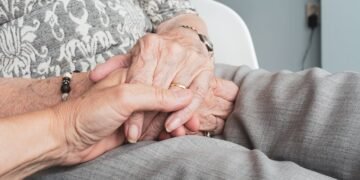Dr. Naeem Aziz, DGM, FRCP, RCP London; SAS Lead and Council Member; Clinical Director and Strategic Lead for SAS (SAS Advocate), Aneurin Bevan University Health Board.
Citation
Aziz, N. (2024). SAS Doctors in the NHS Primary Care: A Scoping Review of Comments and Recommendations. SAS Medical Journal, 2024-12-02(3). https://doi.org/10.5281/zenodo.14559282
Introduction and Background
Over the last two years, significant debate has surrounded the role of SAS doctors in primary care. This discussion began with an NHS proposal to explore their involvement in primary care and was met with strong objections, particularly from the Royal College of General Practitioners (RCGP). Publications such as Pulse have amplified these concerns, with many primary care physicians opposing the inclusion of SAS doctors until a comprehensive review is conducted. Perspectives from the British Medical Association (BMA) and various SAS doctors have added further nuance to this discussion.
My initial disinterest in this topic shifted due to workplace challenges in Wales, highlighting the unclear rules regarding GP involvement with SAS doctors in secondary care settings. This experience led me to reflect on the broader issues concerning the scope of practice for SAS doctors and GPs, emphasizing the need for clarity and equity in their roles.
Review: Historical and Systemic Context
Examining the potential role of SAS doctors in primary care necessitates understanding their historical career trajectory within the NHS. For over three decades, SAS doctors have predominantly worked in secondary care. Repeated reports by the General Medical Council (GMC), Royal Colleges, and independent bodies like the King’s Fund have identified persistent systemic issues, including:
- Inequality and discrimination.
- Limited career progression opportunities.
- Insufficient access to training and education.
Despite this, meaningful solutions have been scarce. Introducing the SAS Advocate role in the 2021 SAS contract reforms represents a small step toward addressing these issues. However, it does little to rectify the undervaluation of SAS doctors’ expertise, which remains a significant barrier.
Notably, RCP and GMC surveys highlight that SAS doctors often possess substantial experience within their chosen specialities, with the majority exceeding 10 years of practice. This depth of expertise starkly contrasts with the challenges many GPs face when transitioning into roles requiring similar levels of specialization.
Training and Experience: SAS Doctors vs. GPs
SAS Doctors
SAS doctors, particularly those in the associate specialist or specialist grades, often work autonomously, managing caseloads and clinical responsibilities akin to consultants. Entry to these roles requires:
- At least 12 years post-primary medical qualification.
- A minimum of six years in their chosen specialty.
This experience aligns closely with the requirements for GMC specialist registration and reflects a level of proficiency far beyond the expectations for entry-level GPs.
General Practitioners (GPs)
In contrast, GPs follow a shorter training route, comprising:
- Two years of foundation training.
- Three years of GP-specific rotational training, including 18 months in secondary care specialties and 18 months in supervised primary care practice.
GP trainees’ exposure to secondary care specialities is often minimal. These typically involve short attachments to disciplines such as general medicine, geriatrics, paediatrics, obstetrics and gynaecology. Upon completion, GPs begin their careers as independent practitioners with limited specialization.
Analogy and Comparison
The training pathways for GPs and SAS doctors reflect fundamentally different priorities. GPs are generalists focused on managing common and unselected medical cases in primary care. In contrast, SAS doctors’ careers emphasize specialization, granting them a depth of expertise in specific fields. Comparing the roles highlights the non-transferable nature of their respective experiences without additional training and adaptation. A consultant in secondary care would be subject to similar limitations if they decided to have a career in primary care or a GP deciding to have a career in secondary care. This is further highlighted in the advice given by the NHS Employers (NHSE, 1, 2)
Statements from the RCGP
The RCGP’s position on SAS doctors in primary care has been critical. Key statements include:
- “The use of SAS doctors must not detract from efforts to recruit enough GPs.”
- “They would need adequate induction into primary care, training, support, and ongoing supervision.”
These concerns, while valid in part, often overlook the extensive experience SAS doctors bring to the table. For example, SAS doctors with more than 10 years of autonomous practice require minimal supervision to adapt to primary care settings. Structured induction programs, akin to GP training pathways, would adequately address any gaps in their preparation for primary care.
The assertion that SAS doctors would require ongoing supervision appears unfounded when applied to those with significant clinical experience. Such statements risk perpetuating outdated stereotypes and undervaluing SAS doctors’ contributions.
Equity and Integration
The integration of SAS doctors into primary care must occur on equitable terms, ensuring:
- Role Clarity: SAS doctors should work independently, without hierarchical subordination to GPs. There should be a minimum requirement of six years post-primary medical qualification to be eligible for a role in Primary care.
- Evidence based approach: There is unequivocal data from the last four decades showing inequalities leading to endemic problems in the NHS for SAS doctors working in the secondary care sector. However, due to the breadth of the scope of clinical practice in a hospital setting, SAS doctors get opportunities to take on more senior roles. This is unlikely to be the case in the primary care setting. SAS doctors are more likely to suffer inequalities and second-rated treatment if they are employed to work in a role considered inferior to a doctor on the GMC GP register. Most SAS doctors have more experience in their chosen specialities than those who take the GP training route after graduating from medical school. And inclusion into the GP register requires a much shorter time and limited experience compared to an autonomous role in secondary care.
- Training and Induction: Any level of experience is not a substitute for proper induction and transition into a new role. Transition pathways should include targeted induction in relevant primary care areas such as paediatrics and mental health. Following the induction, the SAS doctor should be phased into becoming a GP without creating another tier to work under the GP. If this requires the SAS doctor to pass any examination or requirement set by the RCGP, then this must be a compulsory requirement to continue to work in primary care like a GP. Otherwise, the SAS doctor should consider reverting back to secondary care. The induction period for an experienced SAS doctor should not be more than one year, and possibly a second year, during which the doctor should be expected to fulfil the requirements to enter the GMC GP register. Doctors who fail to attain formal GP status should not be allowed to continue in primary care as doctors working under supervision beyond the initial two years.
- There is no case for ongoing supervision in primary care: Unlike secondary care, there is no comparable model of ongoing supervision of the doctors in different tiers in primary care, except for the limited duration for a GP registrar. Any ongoing role subject to supervision in a primary care setting is neither a valid professional argument from the training and education perspective nor is it free from long-term inequalities and hierarchical misjudgements that would lead to more problems, eventually compromising the quality of patient care. The formal statements from the Royal College of General Practitioners emphasising “ongoing supervision” are without evidence, nor does it make professional sense, given the nature of work for a doctor in primary care or the formal training requirements to become a GP. Such statements reflect a protectionist approach and stance, which is further evident from the long-standing campaign by the RCGP to merge the GMC GP and specialist register.
- Remuneration: SAS doctors must receive compensation equivalent to GPs to prevent systemic inequalities. A doctor transitioning from an SAS role in secondary care must be allowed to maintain salary packages during the induction phase in primary care. Their contract should be aligned with the GPs at the end of the induction period, depending upon the rules agreed and transition in to a formal GP role. If the doctor decides to revert to secondary care, they should be allowed to do so during the induction period without detriment.
Conclusion and discussion
SAS doctors are an invaluable yet underutilized segment of the NHS workforce. Their potential contributions to primary care warrant serious consideration, provided that clear, equitable pathways for integration are established. Policymakers must prioritize collaboration and fairness to avoid repeating historical patterns of inequality. As the Royal College of General Practitioners articulated, there is no evidence or case for ongoing supervision of SAS doctors in primary care. That statement is without merit and evidence. Nor is there a case for a two-tier system for doctors in primary care when inclusion into the GP register requires minimal initial experience as a doctor and no long-term expectation to manage complex cases within the confines of primary care, for which secondary case is better equipped.
While the RCGP’s objections reflect legitimate concerns, they should not overshadow SAS doctors’ extensive expertise. The NHS can strengthen its workforce and improve patient care outcomes by addressing these issues with nuance and foresight.
The Portfolio pathway (formerly CESR) is well known to be a highly complex and bureaucratic process which seriously and regularly limits the scope for deserving doctors to attain specialist or GP status in the NHS. While SAS doctors who have worked exclusively in secondary care thus far have adapted to the requirements for the specialist register and few take such a route, this would be an unchartered territory for the SAS doctors if they were phased into any roles that were not on equitable terms to the qualified GPs.
Although I strongly oppose and disagree with some of the statements by the Royal College of General Practitioners (RCGP), which seem to undermine the breadth of experience that SAS doctors bring to the NHS, I tend to agree with the RCGP that the proposed plan to give SAS doctors a role in the primary care is premature and not without serious long-term issues. If the NHS is facing a serious shortage of GPs in the coming years, then the NHS needs to look at the current training models, which seem outdated. So is the stance of the RCGP. While newly qualified doctors finishing the two foundation years only require 3 more years to become a GP, this process could be easily adapted from more senior and experienced doctors working either as SAS doctors or in locally employed roles to bring the training model that is reflective of their additional experience, thus shortening the transition to a GP role, while maintaining essential training and qualification requirements that exist for the traditional routes and without compromising any standards.
Compromising such standards or creating a two-tier primary care system would undermine the vital role GPs play in the NHS and compromise SAS doctors’ role even further. There is no scope for SAS doctors to work under supervision in primary care at present unless they gain the required competencies to work like a GP to maintain equivalence and patient safety.
References
- The state of medical education and practice in the UK Workforce report 2024
- Reflections Of SAS And Locally Employed NHS Doctors | The King’s Fund
- The use of SAS doctors must not detract from efforts to recruit enough GPs
- ‘They are not a substitute for GPs’, says College Chair
- ‘Primary care doctor’ plan will bring ‘demise’ of GP profession, says GPC chair – Pulse Today
- Salaried GP minimum employment standards | NHS Employers
- Does work as a GP Principal count as experience equivalent to that of a consultant for seniority purposes? consultant-contract-faqs.pdf


















